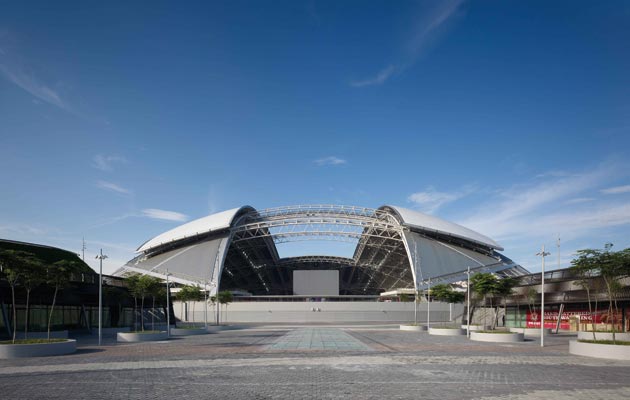|
In our latest issue, we look at how Barber & Osgerby’s consultancy arm is reinventing the design business model and meet Grafton Architects, the curators of the next Venice Architecture Biennale The merging of the worlds of design and entrepreneurship has created a new class of designer – the designpreneur. Irritating portmanteau aside, the term does underline the complexity of the modern design business. In the old days, you designed a product for a company. Said company made, marketed and distributed your product. People bought it and you received royalties. Underpinning the system were two realities: there were fewer designers angling for a slice of the action and a lot more cash swilling around. The demand for cheap consumer goods, satiated by Far Eastern manufacturing power, means the royalty system – save for a few elite designers – is all but done. Today, the design business is less formulaic and far more immediate. Anyone with a website can display their wares to a global audience, while greater access to more sophisticated manufacturing techniques means you no longer have to convince a company to invest in your product. And, with the advent of crowd-funding websites such as Kickstarter, a designer – through artful presentation of their prototype – can gauge the commercial viability of a product and, in the best-case scenario, get it funded. One studio breaking new ground in this new era of people-power is design consultancy Map, which is our cover story this month. The brainchild of design duo Barber & Osgerby, Map has worked with several companies to help them develop and bring products to market via Kickstarter. In return, Map gets a stake in the business and a fee. Its method parallels the venture capitalist model, though the studio (perhaps rightly) resists this comparison. However you dress it up, one thing is clear: in a hyper-competitive global market, more and more companies are realising that good design is what separates success from failure. Design is the new capital and the new generation should exploit this ruthlessly. |
Words James McLachlan
Cover: Suzy Snooze baby monitor, night light and sleep trainer by BleepBleeps and Map. Photography by Felicity McCabe |
|
|
||
|
|
||
|
IN THIS ISSUE FRONT Opening shot Newly-opened, Beipanjiang bridge is the world’s highest Scene Design and architecture news worth knowing Diary The must-see events coming up this month Crimes against design Tim Abrahams on the dangers of seductive infographics Opinion Traditional architects deserve a place in the spotlight, argues Hugh Pearman
DESIGN Taking a chance How Map is redefining the way that young firms are bringing their products onto the market Emerging studio Martin Høgh Olsen creates a brand for hybrid designs you didn’t even know you wanted Icon of the month The late Lella Vignelli’s wide-ranging contribution to the world of design, from chairs to graphics Reinventing Danish design The difficult task facing the country’s next generation Check mate! Daniel Libeskind designs a chess set for Swarovski Q&A: Aric Chen On delays to the M+ museum of visual culture, the changing discourse on Chinese design and how he became Mr Neon
ARCHITECTURE Grafton Architects The Dublin duo extends topography into their work Estonian National Museum DGT’s first and final project is a sublime meditation on how to design a national museum Juergen Teller’s surreal studio The German photographer’s London residence is a finely crafted maze by 6a architects Icon of the month Šumperák: the house that made Czechoslovakia fall in love with modernism (again) Q&A: Ole Scheeren The globe-trotting architect talks about buildings with purpose REVIEW Review: Zaha Hadid, Early Paintings and Drawings Sam Jacob reviews the architect’s retrospective at the Serpentine Sackler Gallery Review: Lost Futures The latest book by Owen Hopkins takes a measured approach to the architecture of post-war Britain Rethink: Brexit Hamburg-based studio Karl Anders tackles all stages of Brexit grief Obsession: Carlos Diniz In the age before seductive computer renderings, architects turned to Diniz to represent their utopias |
||






















